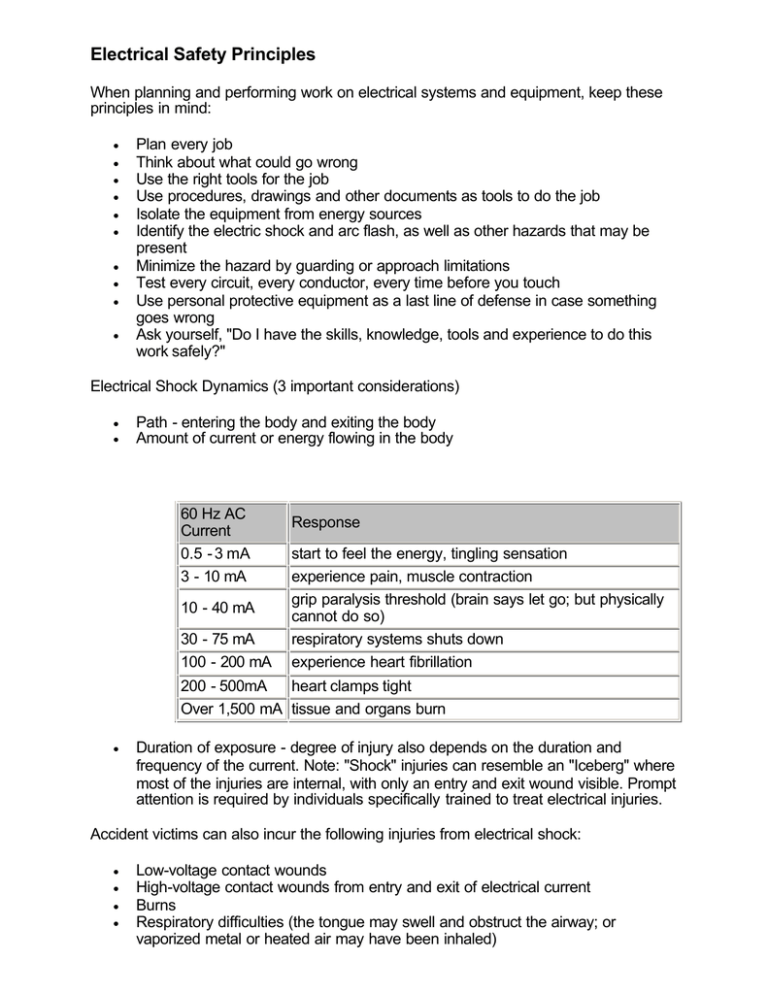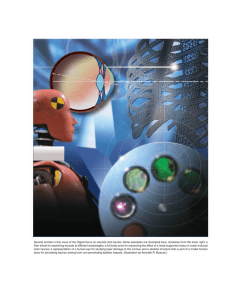Electrical Safety Principles
advertisement

Electrical Safety Principles When planning and performing work on electrical systems and equipment, keep these principles in mind: • • • • • • • • • • Plan every job Think about what could go wrong Use the right tools for the job Use procedures, drawings and other documents as tools to do the job Isolate the equipment from energy sources Identify the electric shock and arc flash, as well as other hazards that may be present Minimize the hazard by guarding or approach limitations Test every circuit, every conductor, every time before you touch Use personal protective equipment as a last line of defense in case something goes wrong Ask yourself, "Do I have the skills, knowledge, tools and experience to do this work safely?" Electrical Shock Dynamics (3 important considerations) • • Path - entering the body and exiting the body Amount of current or energy flowing in the body 60 Hz AC Current 0.5 - 3 mA 3 - 10 mA 10 - 40 mA 30 - 75 mA 100 - 200 mA Response start to feel the energy, tingling sensation experience pain, muscle contraction grip paralysis threshold (brain says let go; but physically cannot do so) respiratory systems shuts down experience heart fibrillation 200 - 500mA heart clamps tight Over 1,500 mA tissue and organs burn • Duration of exposure - degree of injury also depends on the duration and frequency of the current. Note: "Shock" injuries can resemble an "Iceberg" where most of the injuries are internal, with only an entry and exit wound visible. Prompt attention is required by individuals specifically trained to treat electrical injuries. Accident victims can also incur the following injuries from electrical shock: • • • • Low-voltage contact wounds High-voltage contact wounds from entry and exit of electrical current Burns Respiratory difficulties (the tongue may swell and obstruct the airway; or vaporized metal or heated air may have been inhaled) • • • • • Infectious complications Injury to bone through falls, heat necrosis (death of tissue) and muscle contraction (shoulder joint injuries and fracture of bones in the neck are common injuries caused by muscle contraction). Injury to the heart such as ventricular fibrillation, cardiac arrest or stoppage Internal and organ injuries Neurological (nerve) injury Injury to the eyes (cataracts from electrical injury have occurred up to three years after the accident)


